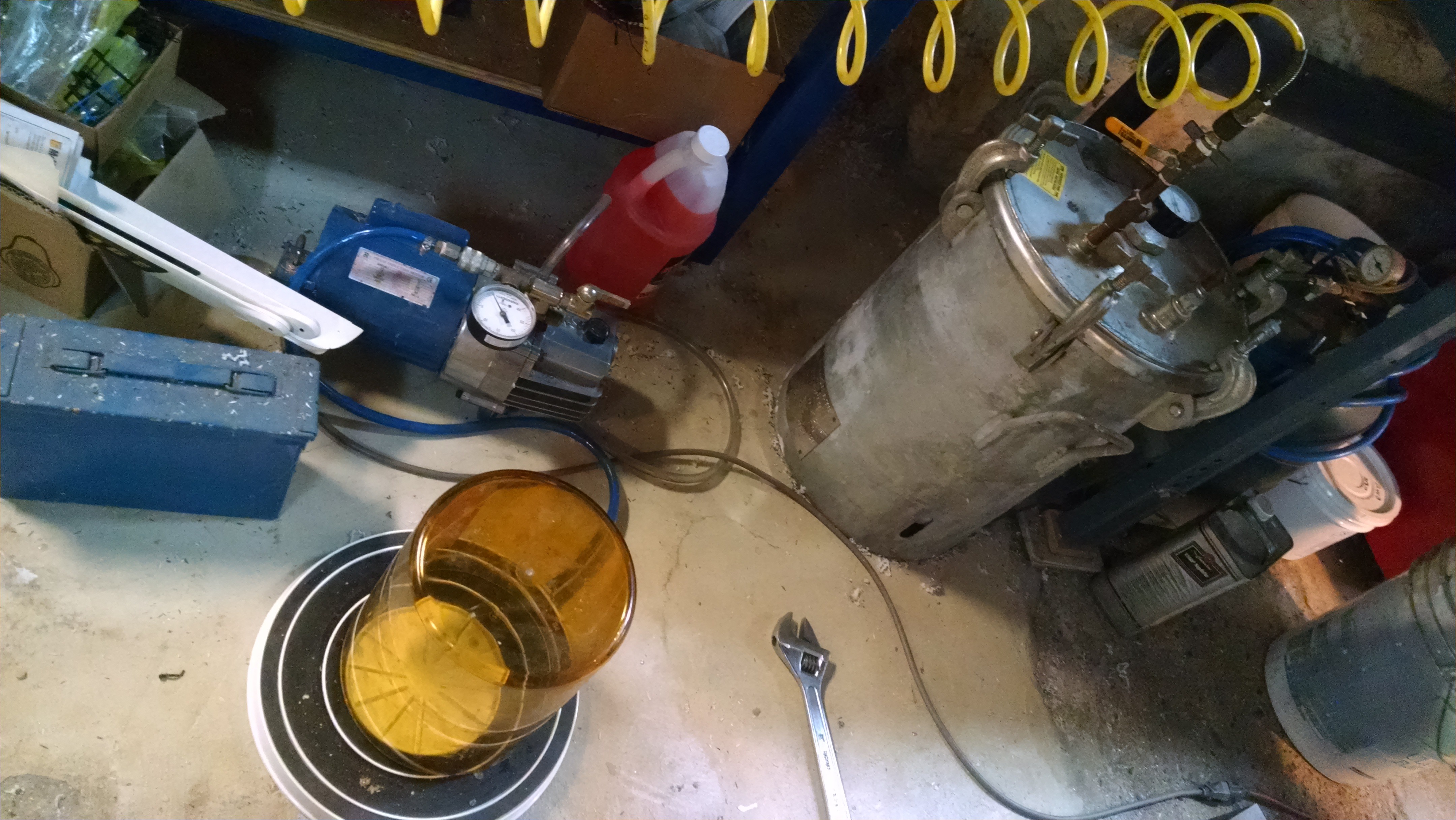Once the silicone is mixed, it must be degassed. The yellow bell jar connected to the blue vacuum tank is what we use for degassing. You put your mixed silicone in the jar and crank up the vacuum. It's pretty fun to watch the air (bubbles) being pulled out of the mixed rubber. Once the rubber is mixed, it's time to pour.
We are located in NY, and it's July- so it is really hot and humid. We're not doing this in a temperature controlled environment as we should be. Water (humidity) getting into the silicone can cause it to not cure, and heat can cause the silicone to kick (cure) faster than is optimal, trapping bubbles.
The pressure tank to the right is what the mold is placed in to further draw bubbles out of the casting.

 Sophi Kravitz
Sophi Kravitz
Discussions
Become a Hackaday.io Member
Create an account to leave a comment. Already have an account? Log In.
They're mixing up silicone with a curing agent, and then using the vacuum chamber to remove all of the air bubbles. After that, they will pour all of the newly degassed silicon into a box with the model master to create the mould. More air bubbles will be introduced in that pouring process, of course, but it's still a lot better than the freshly mixed silicone.
Are you sure? yes | no
oh, wow... glad I asked, not at all what I imagined.
Are you sure? yes | no
the vaccuum pump/tank takes air out of the jar, first, then (or simultaneously) out of the mold-chamber? So when the bubbling stops in the sample-jar, it indicates that it's out of the mold as well?
Are you sure? yes | no